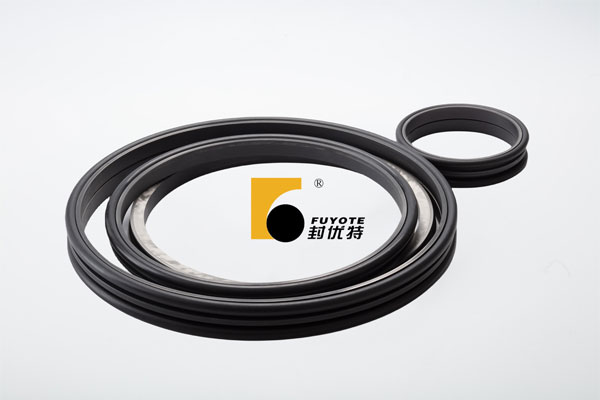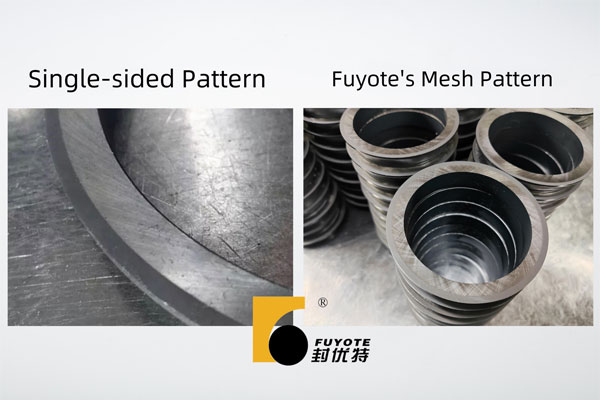
The quality of floating seals is influenced by material selection, raw material quality, manufacturing processes, and precautions during transportation and use. Previous research mainly focused on the differences in raw materials for the metal seal rings of floating seals. This study aims to explore how the manufacturing process of the metal seal rings affects the quality of the final product of floating seals. Factors such as the grinding method of the floating seal end, whether heat treatment is applied to the floating seal, and the processing and grinding techniques all play a crucial role in determining the quality of the floating seal.
The quality of the floating seals in the floating seal end grinding method is determined by the pattern of the bright surface after grinding. The sealing effectiveness of the mesh pattern surpasses that of the single-sided pattern. The image below illustrates the contrasting patterns of the bright surfaces of the two types of floating seals. The left image displays the “single-sided pattern” commonly offered by ninety percent of manufacturers, while the right image showcases the “mesh pattern”of the FUYOTE floating seals.

Most floating seal manufacturers refer to the spherical pattern tilting to one side as the“single-side pattern”.
On the other hand, FUYOTE floating seals feature a cross-hatched spherical pattern, commonly known as the“mesh pattern”.
90% of customers are unaware that the mesh pattern is significantly more expensive than the single-side pattern. From a craftsmanship and raw material perspective, creating the cross-hatched pattern requires the use of cubic boron nitride grinding wheels (also known as CBN grinding wheels), while the single-side pattern can be achieved using brown corundum grinding wheels. The cost of high-quality cubic boron nitride grinding wheels is at least 60 times higher than that of brown corundum grinding wheels!
Additionally, the process of grinding the floating seal with cubic boron nitride wheels is much more complex compared to using brown corundum wheels, which explains why the mesh pattern is more costly than the single-side pattern.

Why do quality-focused floating seal manufacturers need to switch their production lines to cubic boron nitride grinding wheels to grind the “mesh pattern” floating seal, given the high cost of the mesh pattern?
This is due to the following reasons:
Firstly, when using the“single-side pattern”of brown corundum to polish a metal seal ring, it creates wave patterns. In contrast, the“mesh pattern”of the cubic boron nitride grinding wheel does not produce wave patterns, resulting in a uniformly smooth metal surface after polishing, leading to improved sealing properties.
After grinding with a cubic boron nitride grinding wheel, the spherical angle of the floating seal can be consistently maintained within a batch. In contrast, the quick wear of the brown corundum grinding wheel cannot guarantee stability. Maintaining a constant spherical angle not only aids the floating seal in quickly finding center after installation or when facing challenging working conditions, but also stabilizes the sealing performance and reduces installation difficulties. Additionally, two floating seals with consistent angles have matching walking speeds during operation, which is crucial for the cooperation between a dynamic and a static floating seal.
For instance, using a brown corundum grinding wheel with a“single-side line”to grind the floating seal is akin to a person wearing mismatched shoes while walking. While it may temporarily work at reduced speeds under normal conditions, there is a risk of oil leakage at higher speeds, especially in large equipment like shield machines or in coal mining environments. The underlying principle is that as the operating speed increases, the meshing line can detach, causing oil leakage.
Conversely, using a cubic boron nitride grinding wheel to grind the“mesh line”floating seal provides superior sealing performance, effectively preventing oil leakage.
This is why reputable floating seal brands opt for the cubic boron nitride grinding wheel with“mesh line”end grinding method, while lower-quality seals may choose the brown corundum grinding wheel with“single-side line”end grinding method.